Acne is a very common skin condition among teenagers, but it is also present in adults and even in babies.
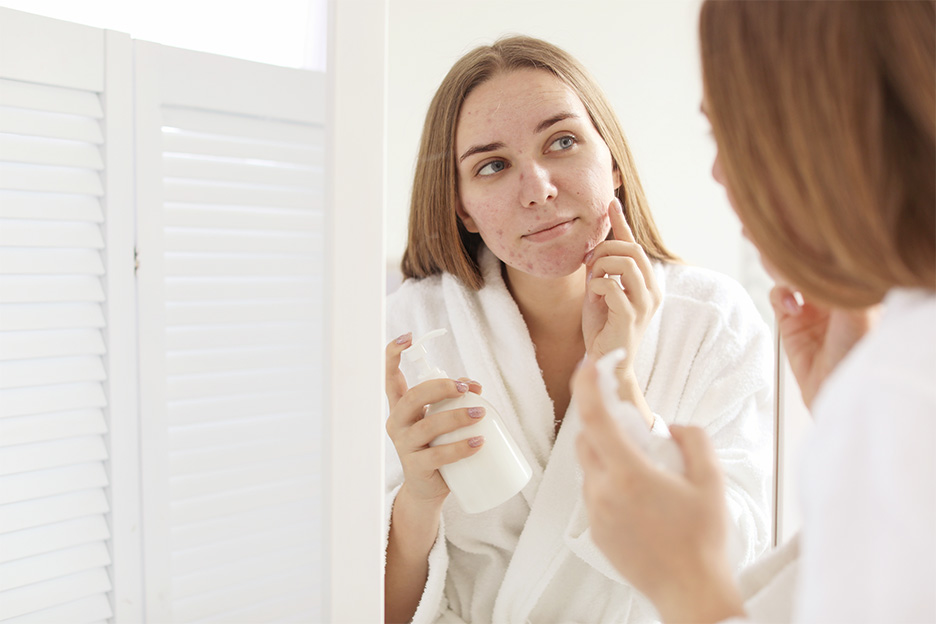
WHAT IS ACNE?
Acne is a chronic skin disease and often evolves over several years. Outbreaks of pimples alternate with calmer periods, depending on the season, aggravating factors, and treatments that are more or less well followed...
The sebaceous gland is responsible for the production of sebum, a mixture of lipids, which is essential to protect the skin from external aggressions and ensure its suppleness. Acne is modulated by two main factors, hormones on the one hand, and bacterias on the other.
HORMONAL FACTOR
Under hormonal influence, sebum can be produced in large quantities or become thicker. At the same time, the cells of the follicle multiply. Hyperseborrhea on the one hand (too much sebum) and hyperkeratinization on the other hand (too many cells) lead to the obstruction of the skin pores and the appearance of the acne outbreaks. Acne is dependent on hormones, which explains why it is very present during adolescence. In adulthood, events such as pregnancy, menstruations, the pill or menopause disturb the hormonal balance and can lead to an increase in acne.
THE MICROCOMEDO: INVISIBLE PRECURSOR STAGE OF PIMPLES
For 1 visible pimple on the surface, there would be 100 more under the skin in the invisible stage, called "microcomedones", which evolve into all sorts of imperfections (open comedones, blackheads, inflammatory pimples, etc.). This precursory and reversible stage can be controlled.
Expert advice: To regain control of your acne and prevent the formation of micro blackheads, use Avene Cleanance Comedomed daily.
UNBALANCED MICROBIOME
In addition, a bacterium called Cutibacterium acnes, which lives in a normal way on every person's skin, also plays a major role in the development of acne. Under the influence of hormones and changes in sebum, the population of these bacteria is indeed modified and will also stimulate the appearance of acne lesions. The obstruction of pores favors an imbalance, a dysbiosis of this type of bacteria that causes inflammation and gives birth to acne pimples. In addition, it develops the ability to organize itself into a biofilm, a protective film that makes it stronger and more resistant to certain treatments.
Other common causes of acne include family history, comedogenic cosmetics, certain medication and stress.
WHAT ARE THE TYPES OF ACNE?
Juvenile acne is the most common form of acne in adolescents (12-17 years) and pre-adolescents (9-11 years). About 80% of teenagers are affected by this type of acne. The skin becomes oily and shiny, blackheads, whiteheads and red spots appear. Juvenile acne evolves over several months or years and requires daily care, especially to limit the risk of scarring in adulthood. Use an anti-imperfection routine that will act to prevent micro blackheads, the invisible stage of acne, while reversing those that are visible on the skin.
Suggestions : Take back control of your acne with Cleanance Gel and Cleanance Comedomed
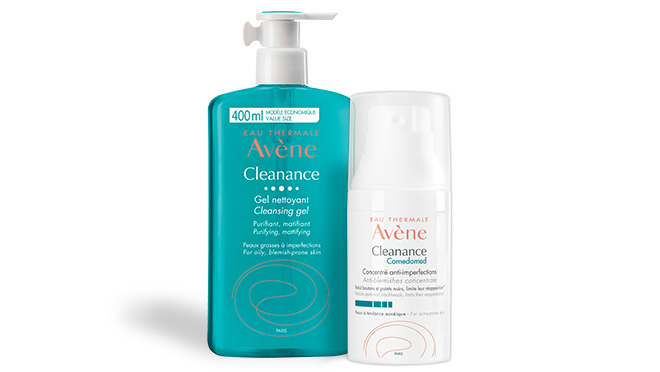
RETENTIONAL ACNE
Retentional or comedonal acne is often the first level of acne. This form of acne is marked by the presence of blackheads (open comedones) and whiteheads (closed comedones or microcysts). Comedones are very small lesions, more or less numerous, which give a "dirty" appearance to the skin, especially if it is oily and the pores are dilated. The keratolytic active ingredients contained in medicinal and/or dermo-cosmetic treatments can unclog pores and act effectively on this type of acne. Look for skin care products that act on comedogenesis or have keratolytic properties such as glycolic or salicylic acid to dislodge retention lesions and clogged pores.
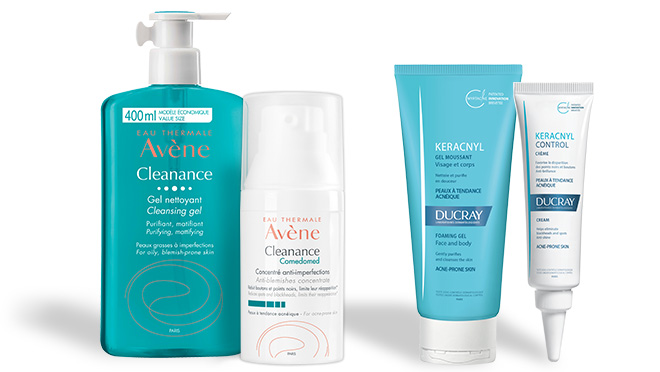
INFLAMMATORY ACNE
Inflammatory acne is probably the best known form of acne. Inflammatory acne pimples appear directly or from comedones (blackheads or whiteheads) as a result of the activity of a skin bacterium called Cutibacterium acnes. They are red pimples, more or less large, more or less painful, more or less deep in the skin. We distinguish:
- papules (small red pimples),
- pustules (papules with a white tip)
- and nodules (large red pimples over 5 mm in diameter).
Acne outbreaks often combine retentional and inflammatory acne, hence the interest of a global treatment whose active ingredients attack both retentional and inflammatory lesions.
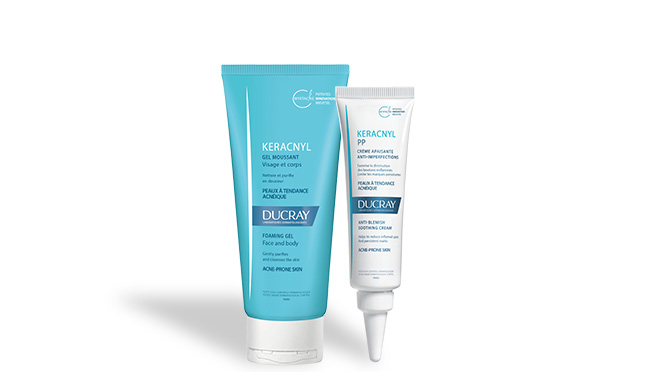
NODULAR ACNE
Nodular acne is also called nodulocystic acne or acne conglobata. It is a rare but severe form of chronic acne, marked by numerous retentional and inflammatory lesions, especially nodules. Treatment is based on oral isotretinoin: it is an effective medication but can dry out the skin, so compensating dermo-cosmetic care should be used to provide comfort to the skin.
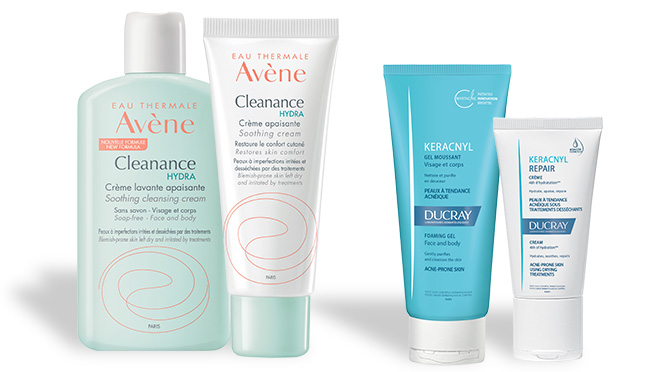
L’ACNÉ FULMINANS
L’acné fulminans est une forme d’acné aiguë, marquée par une atteinte impressionnante et fulgurante du visage et du tronc mais aussi de signes non cutanés comme de la fièvre ou des douleurs articulaires. Une hospitalisation est nécessaire pour prendre en charge le patient rapidement.
"MY SON SUFFERS FROM SEVERE ACNE"
About 15% of people affected by acne suffer from a severe form of the disease. In the case of severe acne, the entire face is affected, with a mixture of blackheads, whiteheads, red spots of varying size... other parts of the body can be affected, such as the back. Severe acne is a form of acne that often has a major impact on the quality of life and can disrupt relationships with others. Consulting a doctor or your pharmacist can lead to an effective treatment such as oral isotretinoin.
"AFTER ADOLESCENCE, I STILL HAVE ACNE AND EVEN MARKS!"
Adult acne is common, especially in women over the age of 25. Acne in women is concentrated on the lower part of the face, while acne in men is concentrated on the back but can also appear on the face. This type of acne is difficult to live with at work, with friends or in the intimacy. But there are solutions!
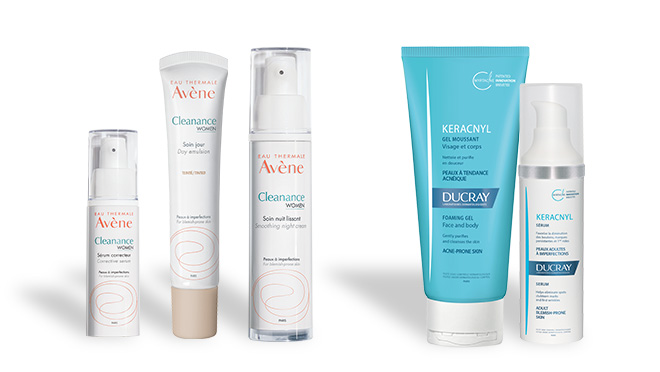
ATTENTION! DO NOT CONFUSE ACNE WITH ROSACEA...
One type of papulo-pustular rosacea can sometimes be confused with acne. It is that papules and pustules look like acne pimples without comedones, and evolve in chronic flare-ups. In this case, the lesions are mainly located on the cheeks and nose. In addition, they tend to appear due to the influence of everyday factors (temperature changes, stress, consumption of certain foods, etc.).
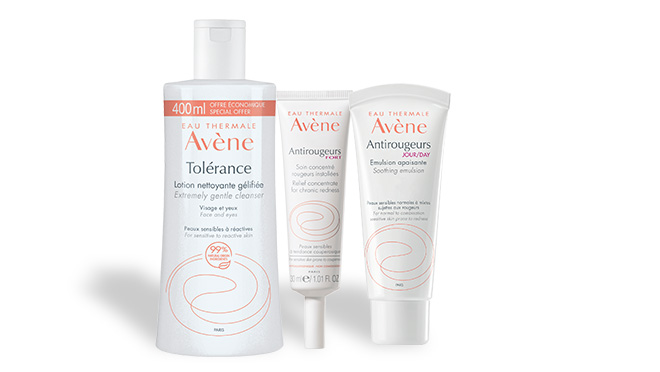
MY BABY HAS ACNE
Infant acne affects babies between 0 and 3 months old. Don't panic if your baby has acne pimples, this type of acne is very common and usually disappears after a few weeks or months. There is no specific treatment apart from some basic advice:
- wash the skin gently,
- dry the skin well,
- do not apply greasy cosmetics,
- monitor progress
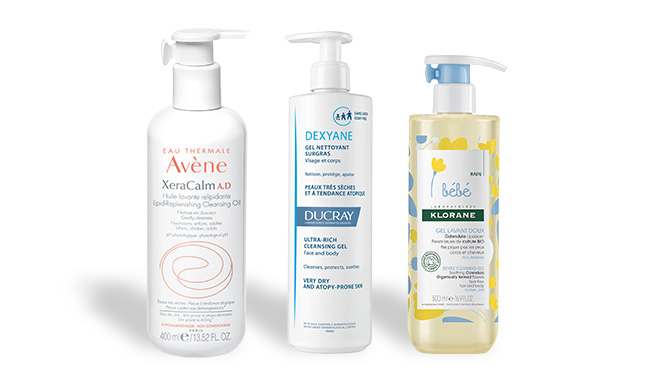
IMPORTANT DAY-TO-DAY TIPS
As soon as the first pimples appear, it is necessary to adopt good habits:
- Do not touch your pimples to avoid superinfections and scars
- Use gentle cleansing products specially formulated for acne-prone skin
- Rinse and dry your skin after a sports session
- Clean your cell phone before putting it near your cheeks
- Apply makeup with products that are adapted and labeled "non-comedogenic
- Use alcohol-free shaving and after-shave products
- Do not expose yourself to the sun without appropriate sun protection because the sun is a false friend of acne: it makes the acne disappear during exposure but causes a rebound of pimples once the sun exposure is over!
As far as diet is concerned, there is no need to restrict yourself or eliminate any particular food: contrary to popular belief, cold cuts and chocolate are not responsible for acne breakouts! While waiting to learn more about other foods, particularly dairy products and sweet products, the most important thing is to adopt a balanced diet.
When in doubt, always consult a health professional who will be able to guide you towards a treatment adapted to your type of acne.